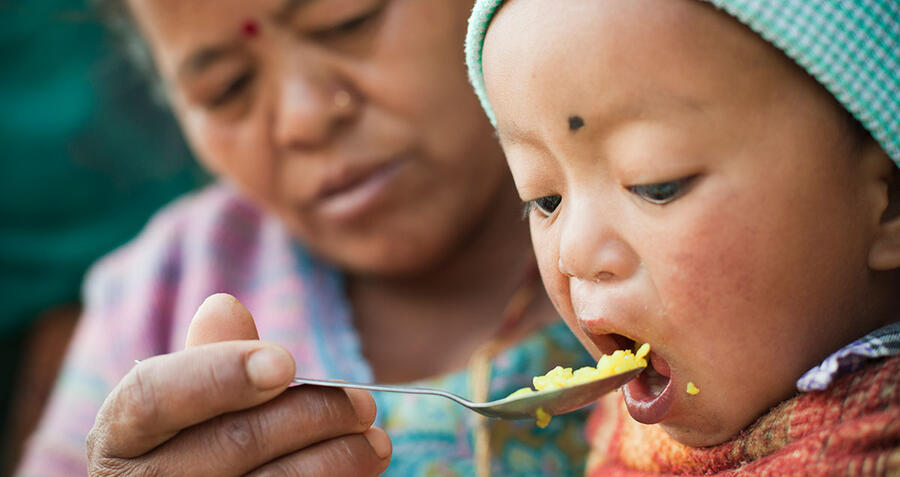The combination of solar power and battery storage is playing an increasingly important role in Australian lives, where it’s helping people lower their reliance on the grid, save money, and reduce their carbon footprint.
Yet 20 percent of the world’s population live without reliable access to electricity, and it’s here that the powerful solar and battery combination is having the most personally positive impact.
We look at four progressive projects in Nepal, Tanzania, Nigeria, and Ecuador to see where solar power with battery storage is making a huge difference to people’s lives.
Combatting food insecurity in Nepal
Humla is a high altitude district in the far west of Nepal. Due to the land’s steep slopes, rocky soil, and forest and river cover, less than 1 percent of the land is actually arable. Coupled with snow cover that lasts for five months of the year, fresh food production is only possible for about three to four months each year. This has resulted in chronic malnutrition amongst the population.
It’s vital for the residents of Humla to be able to store provisions for later in the year, but due to poverty and the remoteness of the area, people can’t dry food in a way that properly maintains its nutritional content. Rural Integrated Development Service-Nepal (RIDS-Nepal), a Social Non Government and Non-Profit Organisation, have designed a solar dehydrator to help alleviate Humla’s plight.
The dehydrator is made up of six trays and can hold a considerable amount of food. A 12-volt solar battery powered fan inside the dehydrator’s upper chimney varies the air-flow throughout the dehydrator. Dried under these conditions, the food preserves its nutritional content and is protected from dust, insects, animals and Humla’s often severe weather. What’s more, the solar dried food is of a standard high enough to sell and generate income for the village when there’s an excess.
The dehydrator at Humla is currently being evaluated by RIDS-Nepal to see if similar designs should be rolled out to surrounding villages.
Quenching thirst in Tanzania
Only 25 percent of Tanzania’s population of 45 million has access to electricity –one of the lowest electrification rates in the world – and 70 percent of Tanzanians live in rural areas, where access to electricity is a mere 7 percent. Mtwara Rural in South Tanzania is one such location, where access to clean water and electricity is scarce, and poverty is acute.
In 2012, Ensol Tanzania Ltd embarked on a far-reaching project to supply all 11 of Mtwara Rural’s villages with a solar water pumping system. Complete with a battery, the system is capable of supplying up to 50,000 litres of tap water per day. The project was originally financed by the European Union and administered by African Medical and Research Foundation (AMREF), and a committee in each village is responsible for collecting small contributions from residents to maintain the project.
As a result of the program’s success, the Tanzanian government now plans to replace all diesel water pumps in the country with solar pumps.
Powering health centres in Nigeria
Nigeria regularly has widespread grid outages and relies on diesel. Lagos is the second most populous state in Nigeria, and many of its residents live in rural areas without access to any power supply at all.
The precarious power situation particularly affects health centres, and the harsh reality is that when fuel is scarce, hospitals in Lagos can effectively stop running for days. Lives are often lost as life support machines stop running and people fail to receive vital medical treatment on time.
In 2014, the UK Department for International Development (DFID) and the state government of Lagos joined forces on an ambitious project to power public institutions with solar powered systems. Christened ‘Lagos Solar’, the project electrified 11 Primary HealthCare Centres and hundreds of schools throughout rural Lagos, using solar and battery systems implemented by African Energy in collaboration with Schneider Electric.
Health centres report that they are now able to accept all baby deliveries, as power is available even at night. Doctors and staff no longer have to refer expecting mothers to more expensive hospitals, and the cost of buying fuel for dilapidated generators has been eliminated.
Lighting villages in Ecuador
Only 77 percent of rural households in Ecuador have access to electricity, leaving an estimated 1.1 million people without energy. One of these is Las Balsas, an isolated community in north western Ecuador composed of about 20 or so houses. The village has no grid connection, and the nearest electricity lines are a good two-hour hike away.
The conditions in the village are particularly good for solar power, and in 2012 Trama TecnoAmbiental (TTA), an international consulting and engineering firm, delivered Solar Hybrid Microgrid (MGS) and various micro-plants with battery storage to Las Balsas, eradicating the need for loud and polluting diesel generators.
Thanks to a grant from the Municipality of Barcelona, Spain, executed by the Spanish NGO SEBA, Las Balsas now has street, school, community house and individual home lighting 24/7, with cheaper, cleaner, and safer results than the diesel generators they previously relied on.
Solar power is opening up new possibilities for energy all over the world. Here in Australia, with our abundance of this natural resource, why not see what a difference solar power and battery storage can make at your place.
Read about a social enterprises using solar to help African children and adults have access to light after the sun goes down.




